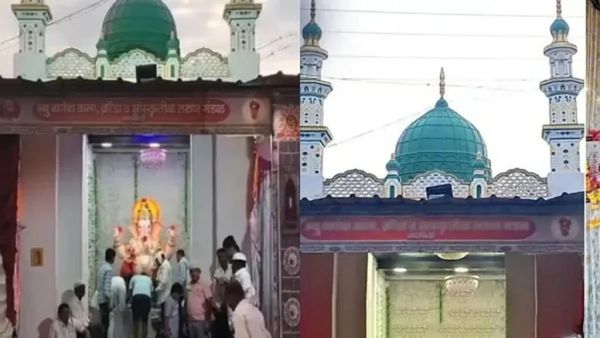
The festival of Ganesh Chaturthi has once again brought a small village in Maharashtra to the headlines. A statue of Ganpati Bappa is installed in a mosque in Gotkhindi village in Sangli district, and not only the Hindu but also people from the Muslim community participate in this festival. Everyone is surprised to see this unique scene.
You will be surprised to know that the people of the Muslim community of this village take part in every work from the installation of the idol of Ganapati to the worship and offerings. This is not new, but this tradition has been going on since the year 1980. In this festival, the idol of Ganesha is installed inside the mosque, and Muslim siblings are engaged in worship and preparations with full vigor.
Ashok Patil, the founder of ‘New Ganesh Tarun Mandal’, told in an interview that the religious tension in the rest of the country in this village has no effect. This village with a population of about 15,000 lives 100 Muslim families, who are active members of this mandal. They openly help in preparing prasad, offering prayers and other celebrations of celebration.
Mandal president Elahi Pathan said that Hindu and Muslim communities celebrate Ganeshotsav every year with great enthusiasm and devotion. The tradition began in 1961, when due to heavy rains, the local Muslim community invited its Hindu neighbors to install Ganesh Pratima inside the mosque. Since then, this tradition has been going on with peace and harmony, in which the active participation of the Muslim community remains.
Ashok Patil told a Marathi news channel that the festival remained stopping for a few years, but after the formation of ‘New Ganesh Mandal’ in 1980, the tradition started again and so far the statue of Ganpati has been installed in the mosque for 45 years. This example of harmony and unity still persists.
During this 10 -day celebration, the idol of Ganpati is kept in the mosque. The festival ends on the day of Anant Chaturdashi, and the idol is immersed in the local reservoir. This tradition not only reflects religious unity, but also presents an example of social harmony.